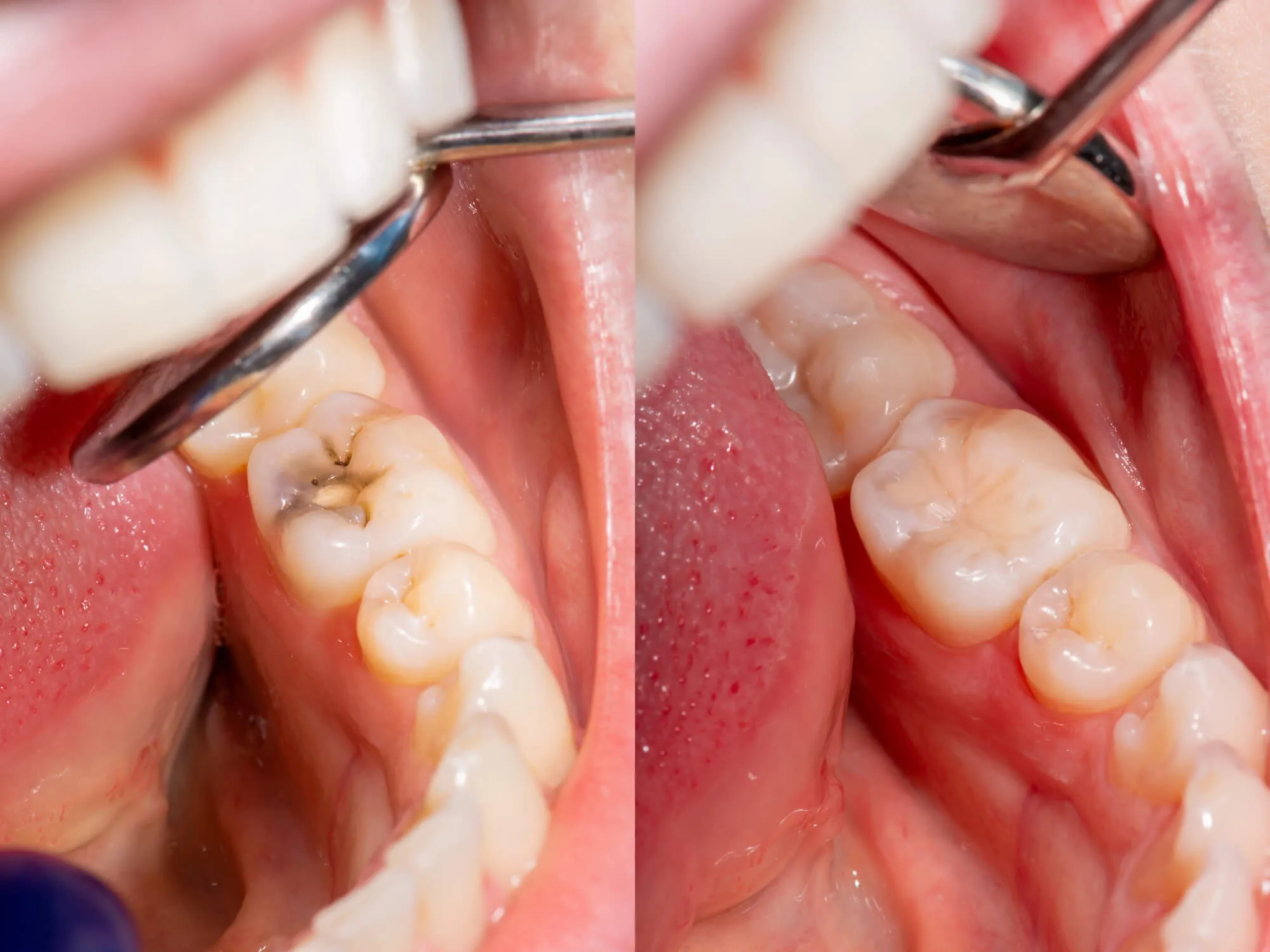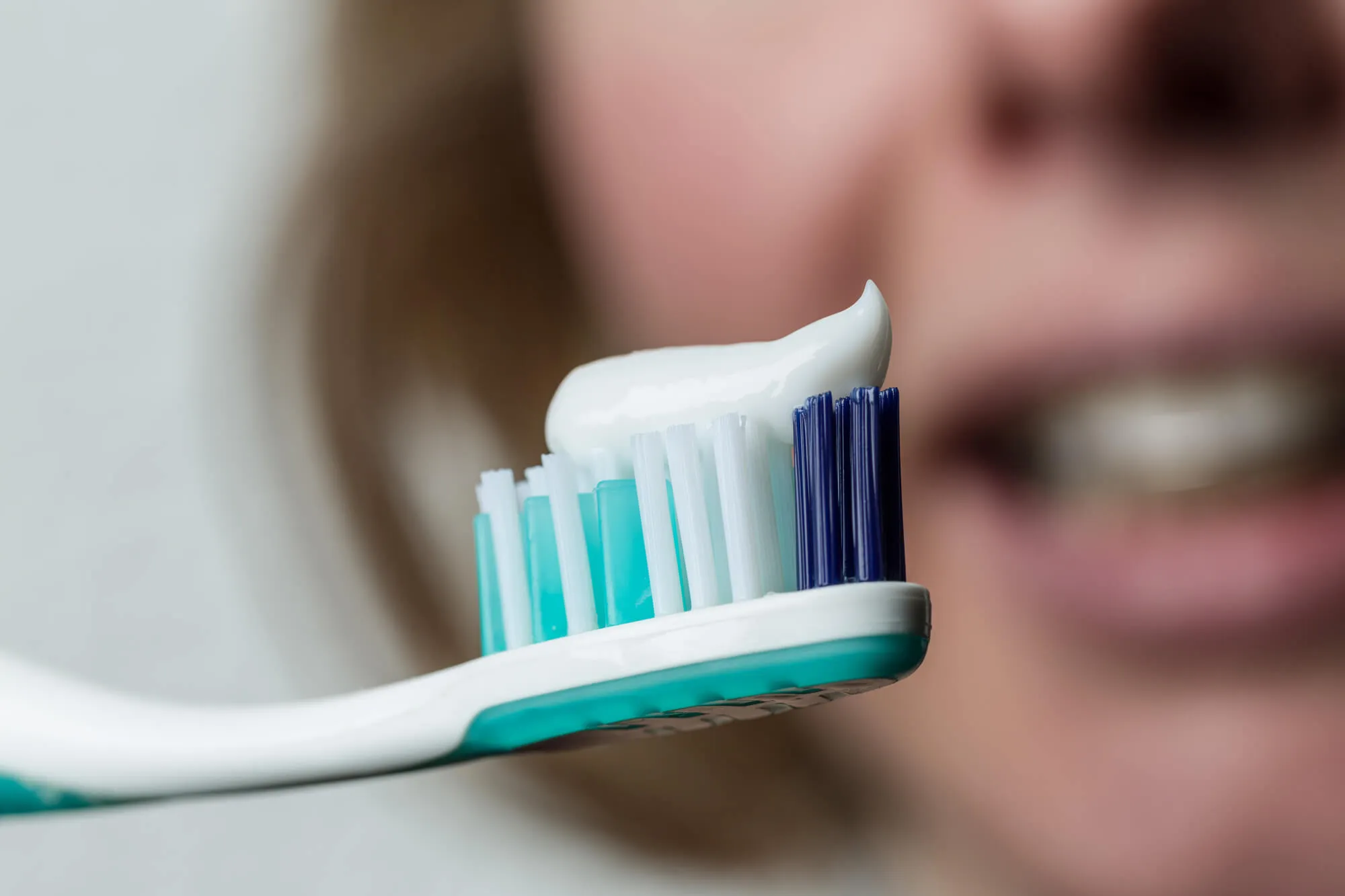
Why You Shouldn’t Ignore a Small Cavity
Even the tiniest cavity might seem harmless, especially when there’s no pain. However, what starts as a small spot of decay can quietly grow, damaging the tooth and affecting the surrounding structures. Before long, you could face discomfort, infection, or even tooth loss. Fortunately, early care through restorative dentistry in Boynton Beach can prevent bigger issues and help you maintain a healthy, confident smile.

How Cavities Start Small but Grow Quickly
The Early Stage: Plaque and Enamel Erosion
Cavities begin when bacteria feed on leftover food particles and release acids that weaken enamel. You may not notice it at first, and a faint white spot or mild sensitivity might be your only clues. As enamel minerals dissolve, the tooth becomes more porous. Without timely attention, these acids erode the enamel and penetrate to the softer dentin underneath, accelerating the decay process.
At this stage, decay can spread faster than most realize. Because dentin is less dense than enamel, bacteria can move deeper into the tooth in a short time. That’s why dentists stress the importance of regular exams, because even the most diligent brushing can’t always stop microscopic damage from progressing.
Why Pain Doesn’t Always Mean Progress
Many people think a cavity only matters once it hurts. However, discomfort typically appears once decay nears the nerve. By then, the damage is often more severe, requiring more complex care, such as a dental filling or even root canal therapy. Cavities in their earliest stages rarely cause pain, which makes them easy to ignore. Regular checkups and X-rays help detect these silent problems before they threaten the tooth’s. Cavities in their earliest stages rarely cause pain, which makes them easy to ignore. Regular checkups and X-rays help detect these silent problems before they threaten the tooth’s structure.
Catching a cavity early means simpler, faster, and more affordable treatment. You’ll preserve more of your natural tooth and avoid the frustration of needing crowns or extractions later.
Consequences of Ignoring a Small Cavity
Tooth Decay Can Spread Quickly
Decay rarely stays put. Once bacteria breach the enamel, they can spread laterally and downward, damaging nearby teeth or the tooth’s inner pulp. If decay weakens the surrounding enamel or gumline, it can compromise the stability of nearby teeth. Eventually, you may need a dental crown to restore strength or a bridge if a tooth is lost altogether.
Even small untreated decay can contribute to bite misalignment as teeth shift to fill empty spaces. This can cause uneven stress on your jaw and lead to discomfort during chewing.
Infection and Abscess Formation
When bacteria reach the pulp—the living tissue inside the tooth—they can trigger infection. The result can be swelling, throbbing pain, and an abscess that requires urgent root canal therapy to save the tooth. An abscess doesn’t always appear on the surface; sometimes it forms under the gumline, where it can cause jaw pain or fever.
If infection spreads to the surrounding bone, the only option may be extraction, followed by replacement with an implant or bridge. What could have been a 20-minute filling might turn into a lengthy restoration process.
Impact on Your Overall Health
Your mouth is closely connected to the rest of your body. Research has linked chronic oral infections to conditions such as heart disease, diabetes, and respiratory illnesses. Ignoring small dental issues allows bacteria to enter the bloodstream, potentially worsening inflammation elsewhere. Addressing small cavities promptly protects not only your teeth but also your overall well-being.
How Restorative Dentistry Helps
Dental Fillings: Quick and Effective
A small cavity is easiest to fix with a dental filling. The decayed area is cleaned and sealed with a strong, tooth-colored composite that restores structure and prevents bacteria from re-entering. Modern materials blend naturally with enamel, providing strength and aesthetic appeal.
This simple procedure is typically completed in a single visit and helps protect the tooth for years with proper care and maintenance. Regular checkups enable your dentist to monitor older fillings and replace them if they show signs of wear.

Crowns for Advanced Damage
If decay has weakened your tooth, a dental crown may be the better option. This custom-made cap covers the entire surface, restoring both appearance and function. Crowns are also used after root canal therapy to protect the treated tooth from future fractures and to restore its appearance and function.
Dental crowns are designed to match the natural shape and color of your teeth, providing a durable and comfortable result that feels natural when you bite or speak.
Bridges and Implants for Tooth Loss
If decay leads to tooth loss, restorative dentistry offers reliable replacement options. Dental bridges fill gaps by anchoring artificial teeth to healthy neighboring teeth. Dental implants, on the other hand, replace both the root and crown of a tooth for long-term stability and bone preservation.
Implants also prevent bone loss in the jaw, a common result of extractions. Choosing to restore missing teeth promptly helps maintain your facial shape and oral health.
Full-Mouth Rehabilitation for Complex Cases
For patients with multiple damaged or missing teeth, a full-mouth rehabilitation can combine several procedures—such as fillings, crowns, bridges, or implants—to rebuild the entire smile. This approach restores function, improves aesthetics, and prevents further deterioration. Every plan is customized to your oral condition and lifestyle.
Preventing Cavities Before They Start
Regular Checkups and Cleanings
Routine visits allow your dentist to spot cavities while they’re still small. Professional cleanings remove plaque and tartar that brushing and flossing miss, preventing new decay from forming. These appointments also provide your dentist with an opportunity to review past restorations and evaluate your overall gum health.
Good Daily Habits
Brush your teeth twice daily with fluoride toothpaste, floss once a day, and limit your consumption of sugary snacks and drinks. These small habits make a major difference in keeping enamel strong and resistant to decay. Drinking plenty of water and chewing sugar-free gum can also help neutralize acid after meals.
Protective Treatments
If you’re prone to cavities, ask about dental sealants or fluoride treatments. Sealants form a thin barrier on the chewing surfaces of molars, while fluoride strengthens enamel by remineralizing weakened areas. These simple, painless procedures provide long-term protection, particularly for children and teenagers.
When to Call Your Dentist
You should schedule a visit if you notice:
- Tooth sensitivity to hot, cold, or sweets
- Visible pits or dark spots on teeth
- Persistent bad breath or a metallic taste
- Pain when biting or chewing
Ignoring these early warning signs can lead to extensive decay or infection. Even if you suspect it’s “just a small cavity,” having a professional evaluation prevents unnecessary complications later.

Interested in Restorative Dentistry in Boynton Beach?
Even a minor cavity deserves prompt attention before it progresses. Early restorative treatments help maintain comfort, function, and confidence without the need for extensive treatment later on.
At Aberdeen Dentistry, we believe every smile deserves compassionate, high-quality care. Our team provides a complete range of restorative treatments designed to restore comfort and function. We take the time to listen, explain, and provide care tailored to your needs.
Ready to protect your smile? Schedule your visit with Aberdeen Dentistry today and experience care that keeps your teeth strong, healthy, and beautiful for years to come.









